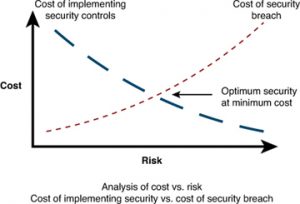There is a new security trend in the United States: tracking students as they get on and off school busses. Across the country school districts are implementing security measures intended to make students safer. Officials say that this is intended to prevent lost children, kidnapping, and youthful disobedience. In Spring, Texas the district is using computerized badges to track students. Another district in Phoenix, Arizona has implemented fingerprint readers to track students.
There is some controversy surrounding these security measures. Students and security experts have raised objections to the measures saying that they are useless, expensive, and annoying. School officials claim that the measures will result in a more efficient and safer transportation system.
Daytona Beach News-Journal’s, Annie Martinannie, reported that, “Volusia County is asking students to identify themselves – either by punching in their date of birth or swiping a card – as they enter and exit school buses.” This security measure has been implemented to reduce the number of students sneaking on friends’ busses and hitching a ride. The system was tested last year and will help staff members track down children who did not arrive at home on time or tried to board the wrong bus. If a parent calls and cannot find their student, the school can see what bus the student rode and where the student got off. Neighboring county, Flagler, considered installing the system but decided the $40,000 start-up cost was too much. Students are criticizing the system for being too cumbersome and noisy. Senior Kristen Bathrick feels the system is symbolic of a lack of trust from parents, but that there are some benefits. She said, “A lot of kids skip school, like they go to the bus stop and leave, It’ll help with that.”

An alternative security measure was implemented by First Student Inc. in 2007. The article says, “In late May, a loaded .22-caliber revolver was found on a First Student bus in Columbia, Mo. This incident, coupled with the hijacking of a bus contracted by First Student last year, led the company to strengthen its on-bus security.” After the hijacking incident the company began examining how they could improve security. This resulted in the Child Check-Mate Systems, which has a Doppler radar infrared detector with special circuitry verifies that no one is on the bus that doesn’t belong there when the bus is not in use. An alarm will sound if there is an intruder during non-usage times and then becomes an alert for the driver if a student is on the bus when he or she is ready to exit. According to Gary Catapano, vice president of safety for First Student, "The intrusion alarm alone does not buy you security," he said. "It's only when you have security training, develop emergency procedures and have a security team available to work with that you have a solid foundation to build upon in terms of creating a safe and secure environment for students and employees." The cost of the system was not indicated, but is this technology actually worth the time and resources committed to implement it?
According to Bruce Schneier, Chief Technology Officer of Resilient, “Tracking kids as they get on and off school buses is a ridiculous idea. It’s expensive, invasive, and doesn’t increase security very much… If the goal is to make children safer, the money would be better spent elsewhere: guards at the schools, education programs for the children, etc.”

Security systems can be a difficult thing to measure fiscally. Most businesses prefer to see an investment as having a tangible financial return, but security doesn’t fit into that definition. Schneier says that “return on investment” is not the correct term because, “Security is not an investment that provides a return, like a new factory or a financial instrument. It's an expense that, hopefully, pays for itself in cost savings. Security is about loss prevention, not about earnings. The term just doesn't make sense in this context.” It could be years, or even decades, before these child-tracking systems save enough money to justify the expense. Technology will surly advance and make these systems more efficient and less obtrusive, but in the meantime, students will just have to deal with the noisy and awkward tracking systems.


